John Hurrell – 27 June, 2012
What is impressive about this show is its range. It is so diverse that I wonder if it really is all documentary - as a category of art. A lot is entertaining and celebratory, not mere social or historical information but as music, dance, games or dress. Some is bodily and exuberant (Janet Lilo, Louise Afoa, Rebecca Ann Hobbs, Ann Shelton) - even sometimes satirical (Sophia Al-Maria, Jae Hoon Lee). It stresses emotional power, not facts or clinical observations.
International group show
In Spite of Ourselves: Approaching Documentary
25 May - 29 June 2012
In this carefully thought through show that looks at the nature of representation, 106 documentary works from 17 artists fill up the two large St Paul St galleries. In-house curator Vera Mey and artists Fiona Amundsen and Dieneke Jansen have selected lots of engrossing material, yet the space has no sense of being crammed. Sound recordings, colour or b/w photography, books, postcards, posters, film and video; all keep the presentation varied, attempting to subvert conventional (mainstream) bourgeois expectations of what the works entail.
The space is organised with sound recordings in the front window (interviews with the artist Sarah Murphy’s mother talking about her youth and conflicted sexual awareness - played simultaneously and out-of-synch from two speakers) and with moving image works from Darcy Lange and Rebecca Ann Hobbs in the outer extremities of the floor plan. The inner, more central walls, closest to the main St. Paul St foyer and part of that, present photography (John Lake, Shigeru Takato) and photos as posters (Ann Shelton).
What is impressive about this show is its range. It is so diverse that I wonder if it really is all documentary - as a category of art. A lot is entertaining and celebratory, not mere social or historical information but as music, dance, games or dress. Some is bodily and exuberant (Janet Lilo, Louise Afoa, Rebecca Ann Hobbs, Ann Shelton) - even sometimes satirical (Sophia Al-Maria, Jae Hoon Lee). It stresses feeling and emotional power, not facts or clinical observations.
Maybe that is the point of the title - a reference to a John Prine and Iris DeMent song with funny raunchy lyrics. In spite of being A it is actually B. Documenting, but with exhilaration too.
There is a lot of work here to sift or sit through. Included are the stark b/w images of David Cook looking at the consequences of the closing of the Rotowaro mine, and the spools of 16 mm microfilm from Luke Willis Thompson containing thousands of haunting photos of migrant graves in a sugar cane worker cemetery in Fiji where the records have gone now missing. Also moving are the lush Cambodian rice fields photographed by Vandy Rattana featuring crater ponds left by American bombs. Pointedly next to these is the almost surreal imagery by Shigeru Takato of desert sites used by NSA to develop its space programme.
The positioning of the artists here has been done with considerable expertise, the way groups of work chat with their neighbours - on adjacent walls or across floors - or as in the case of Lake and Shelton - through a wall in cross-section. Plus the work in all cases (even the sound one) has an interesting materiality. The way the media are used is not too rarefied or austere. There is a sensuality that keeps the eye and mind lingering.
A good example of this is the contribution by Mark Adams. Each of his two glossy images has three printed sheets that emphasise enlargements from 10 x 8 inch colour negatives. You see the borders uncropped, the undulating black bands.
One image is of a wharenui (Hinemihi o te Tawhito) purchased by the 1889 Governor General (the Earl of Onslow) from Te Wairoa near Rotoroa and transported to Clandon Park in Surrey. The other is of the Wairoa landscape itself. The mood of both photographs is not so much melancholic as dark. Only the different sorts of vegetation tell you they are located in different hemispheres, but it is a subtle way of undermining expectations.
Next to them is a suite of images from the controversial 1964 Ans Westra book Washday at the Pa, photographs seen by some as essentialising and untruthful, and the artist herself as accurate - painful though that may be. Both Adams and Westra anticipate the conceptual baggage sections of their audience might bring, and move to counter it.
This is a refreshing show, one that repays several visits. Sophisticated but accessible.
John Hurrell
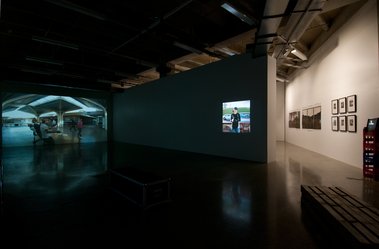
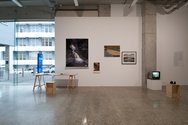
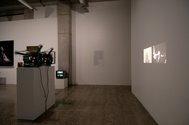


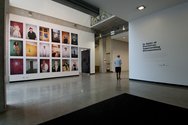
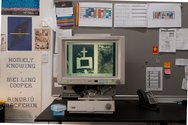
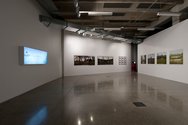
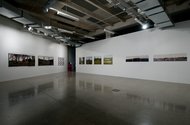
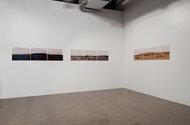
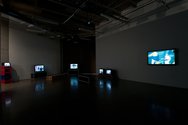
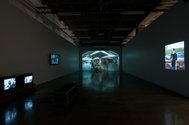
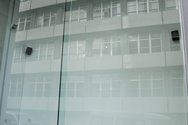
 Two Rooms presents a program of residencies and projects
Two Rooms presents a program of residencies and projects Advertising in this column
Advertising in this column



This Discussion has 0 comments.
Comment
Participate
Register to Participate.
Sign in
Sign in to an existing account.